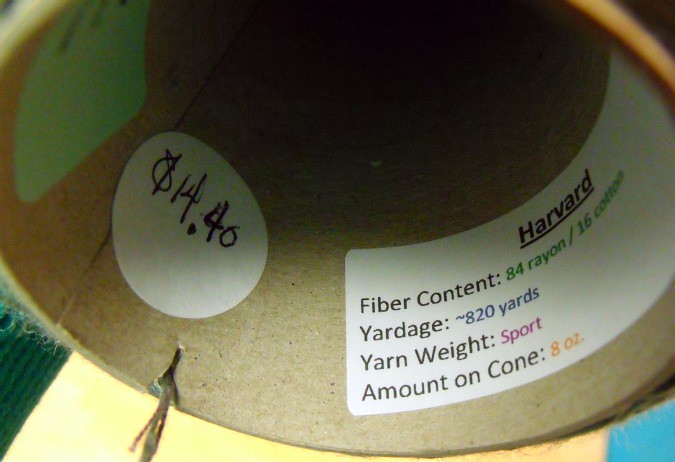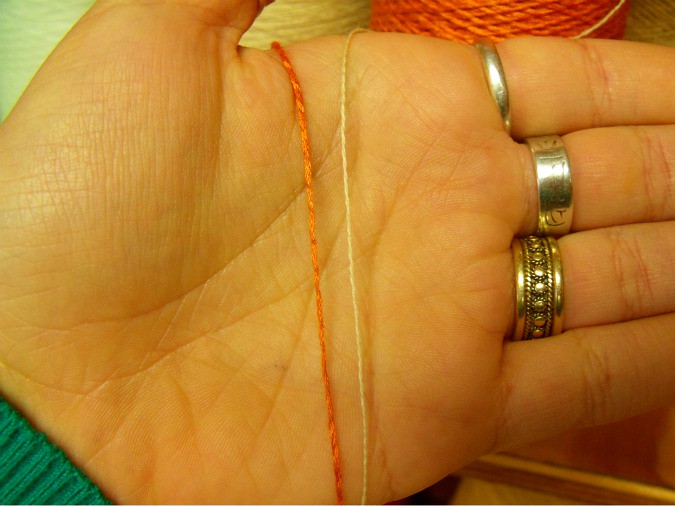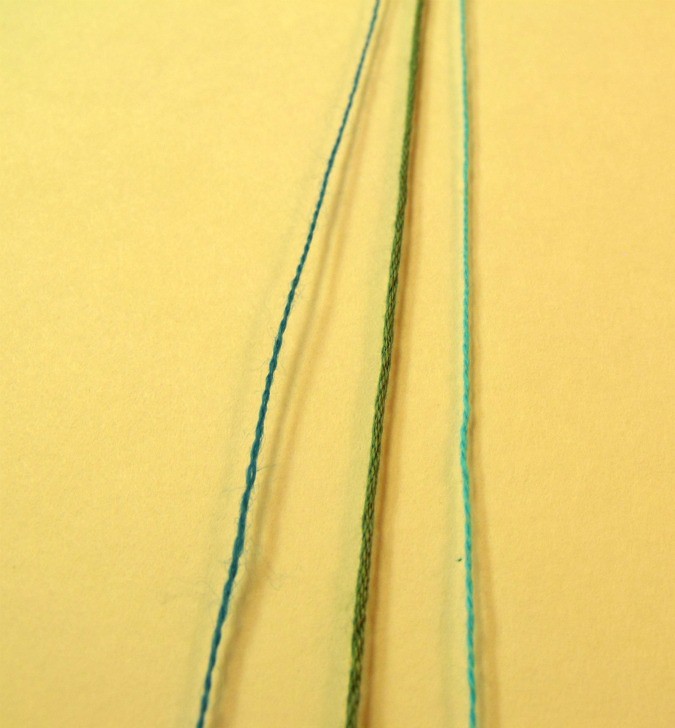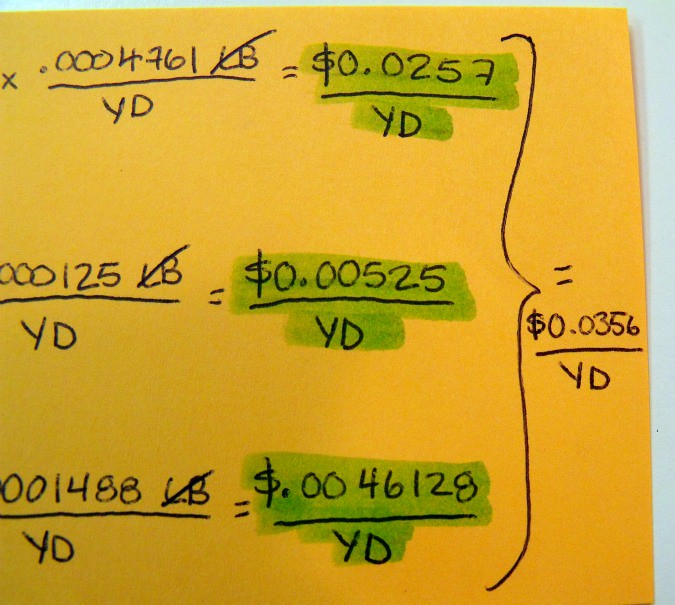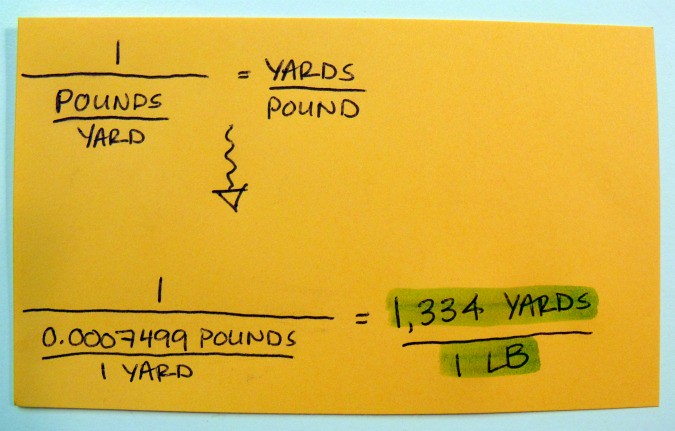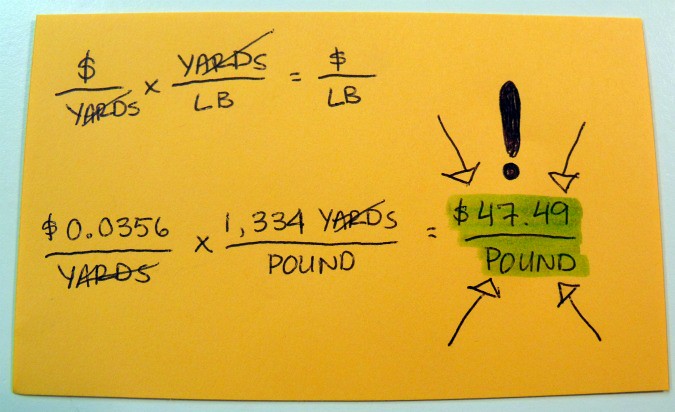How do you calculate the price per pound?
- Posted on: 2021-01-04
- |
- Views: 995
- |
- Category:
- ▸ How-To's
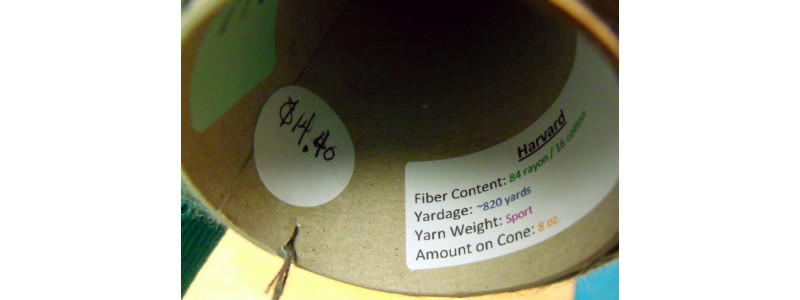
***Originally published on September 16th, 2011***
Warning: things are about to get mathy up in here!
This is a question we get all the time here at the shop: How do we figure out the cost of a cone of yarn?
Well,
figuring out the price on our house blends is easy — the price sticker
inside the cone is how much that entire 8-oz. cone of yarn costs.
But what if I want to make my own from scratch?
Things
still stay pretty simple if you just want to wind off a single strand
of one of our yarns, or if you’re combining multiple strands of the same
fiber, say, to build it up in thickness.
Cotton is $31 per pound, no matter whether you get single strand, or a yarn as thick as a worsted weight
But what if, say, you’ve chosen a cotton/bamboo blend?
The
simple answer to this question is, “It’s an average.” But really, it’s
not as straightfoward as a simple average of the ingredient prices —
this wouldn’t account for the fact that a strand of bamboo is waaay
thicker (not to mention heavier) than a strand of thin merino.
How do we take this into account?
Well,
the key here is the fact that we know this little magic number for
every single ingredient yarn in the store, the yards per pound.
Believe
it or not, this number helps us figure out how much each of those
individual strands in the yarn you’ve put together contributes to the
final price. Let’s look at how:
Let’s
say you’ve chosen a yarn for yourself that combines 3 ingredient
strands: bamboo, merino wool, and cotton — all different in price and
weight. Here’s what we know about each one:
This
doesn’t seem very helpful right off the bat, because if each of these
ingredients yields such a different number of yards for each pound we
wind off, how are we supposed to figure out their contribution to the
final price?
This would be way easier if these were all the same length.
So, digging way back to middle school math, we use reciprocals
to reassure ourselves that if we know how many yards per pound are in
each of these ingredients, we can also figure out how many “pounds per
yard” each of these will yield.
Obviously,
because these strands are so thin, none of them will yield anything
close to a pound in a single yard. But even so, now that we have them
all at a constant length (1 yard), we can compare them to one another.
Okay,
another journey back to middle school…remember cross-canceling when
you’re multiplying fractions? You can do it with numbers, but you can
also do it with units!
Now
we’re getting somewhere. If we can find the $/yd for each of these 3
ingredients, all we have to do is add them together (because they’re now
all a constant length — 1 yard) to find the final price for this
theoretical 1 yard of yarn.
And,
the same way we found the price for this 1 yard of yarn, we can find
the weight of this 1 yard. And because of reciprocals, if we know how
many lbs are in a yard of yarn…we know how many yards are in a pound!
This
is the yards per pound for our final yarn, whereas to start with we
only knew the individual YPPs for each of the ingredient yarns.
Okay,
still with me? Here’s where the magic happens. We’ve figured out how
many yards are in a pound, and we’ve figured out the price for 1 yard of
this yarn.
So using that information, a little more cross-multiplying, and…
Final price per pound!
Of
course we’d have a line out the door if we did this to calculate the
price for every single customer’s yarn. Thank god for spreadsheets!




